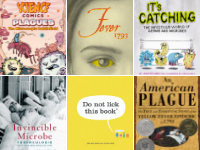Teaching children about disease can be a difficult task. Christopher A. Brown of the Free Library of Philadelphia shares some excellent books to help kids understand this complex and important subject.
These reviews were published in the spring 2019 issue of Pennsylvania Legacies (vol. 19, no 1): Epidemics and Public Health in Pennsylvania.
Book Reviews
by Christopher A. Brown
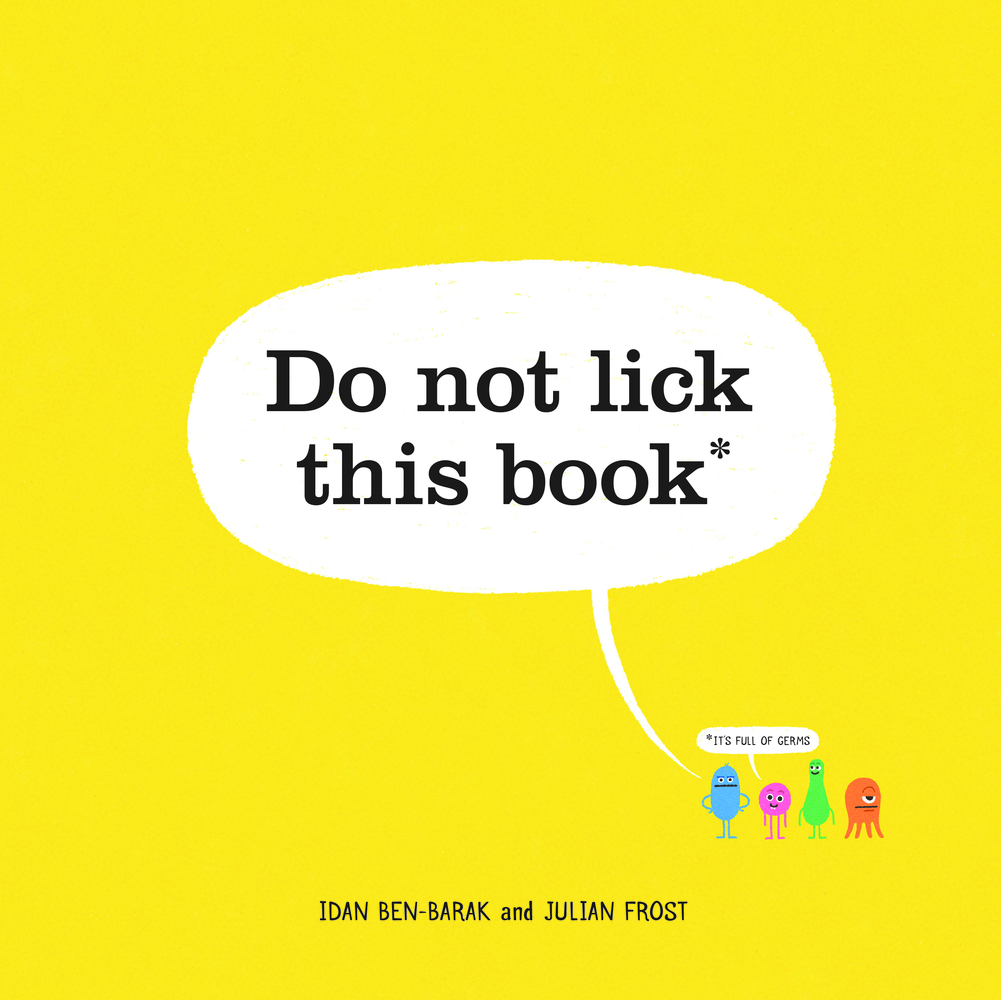
Do Not Lick This Book
By Idan Ben-Barak
Illustrated by Julian Frost
New York: Roaring Book Press, 32 pp. Ages 4–6.
Explaining the concept of a germ or microbe to the pre-K crowd can be tough, but Ben-Barak and Frost take on the challenge with aplomb in this funny (and factual) look at a quartet of germs. The ringleader is Min, an E. coli germ that normally lives in your intestine, but can be found elsewhere. Along for the ride are Rae, a streptococcus; Dennis, a fungus; and Jake, a corynebacterium. The members of the foursome are color-coded for easy identification but thankfully are not gendered by color (Min is referred to as “she” but is a brilliant blue). This picture book is delightfully disgusting and may gently remind younger children about the importance of washing their hands. The end of the book includes information for more advanced readers to share and which may help them answer any questions that might arise.
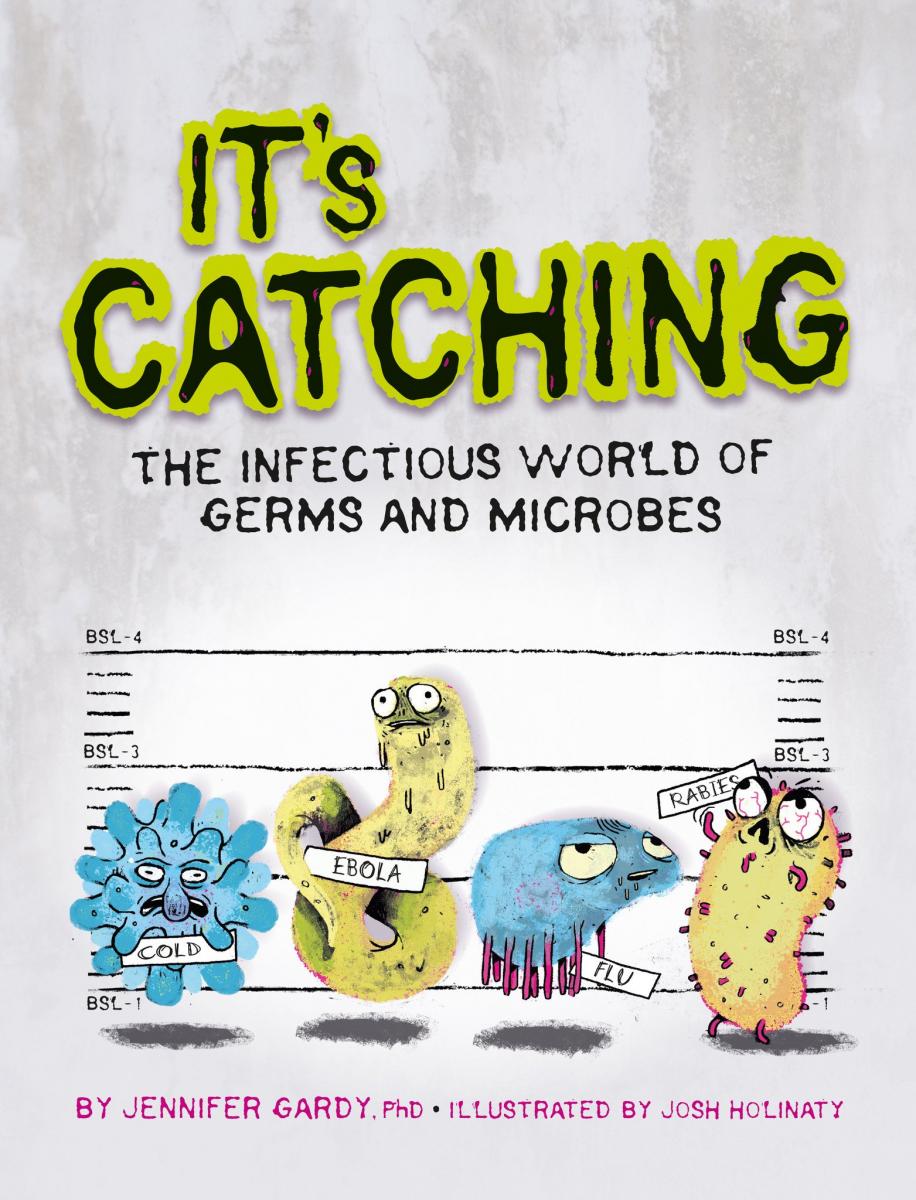
It’s Catching: The Infectious World of Germs and Microbes
By Jennifer Gardy
Illustrated by Josh Holinaty
Toronto: Owlkids, 2014, 64 pp. Ages 8–12.
“Disease detective” (and narrator) Jennifer takes readers on a meet-and-greet tour of some of the germs that have affected human history. Influenza, rabies, and malaria, to name just a few, are among those readers encounter in this fascinating nonfiction title that will delight—and potentially terrify—young minds. The book covers a range of topics, including sanitation, public health, and antibiotics (and the consequences of their overuse). Holinaty’s full-color graphics complement Gardy’s crisp text, and their combined efforts will leave readers wanting to learn more about germs, parasites, and epidemics. The tone and vocabulary are perfect for readers 8-12 who love to know the science behind the gross.
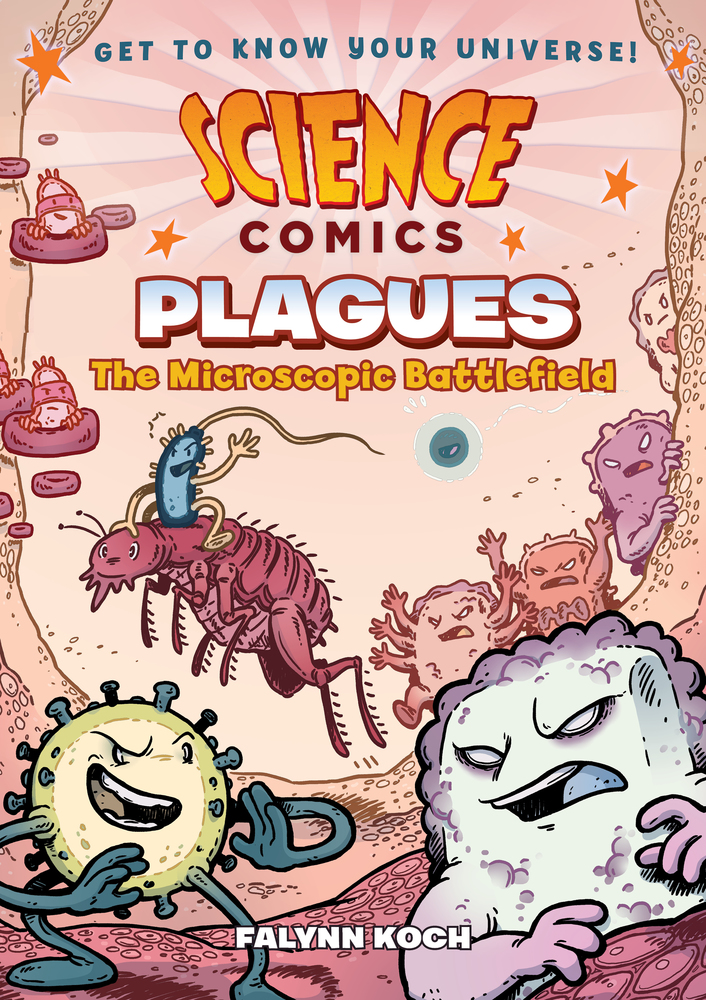
Plagues: The Microscopic Battlefield
Written and illustrated by Falynn Koch
New York: Science Comics, 2017, 128 pp. Ages 9–13.
Science fiction fans may gravitate toward this issue of the Science Comics series, in which an anthropomorphic cast of cells, bacteria, and viruses wage war inside a human body. The graphic novel introduces Elena, a scientist, who attempts to persuade Bubonic Plague and Yellow Fever to turn “vaccine” and help humans instead of harming them. The story is bright and engaging, and the science of infectious diseases is nicely woven throughout the story. While many infectious diseases are mentioned, HIV and other STDs are not. As infection rates of these diseases fluctuate annually, it is unusual that they are not included. At the back of the book, the glossary, timeline, and bibliography provide a nice closing touch, and readers 9–12 will benefit from their inclusion.
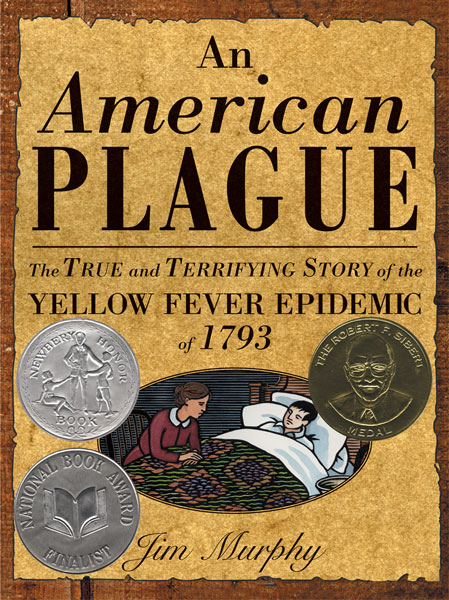
An American Plague: The True and Terrifying Story of the Yellow Fever Epidemic of 1793
By Jim Murphy
New York: Clarion Books, 2003, 176 pp. Ages 10–12.
Nonfiction fans will be drawn to Murphy’s title on the yellow fever epidemic of 1793, which received a Newbery Honor in 2004. The book proceeds in a linear fashion from the detection of the illness by the medical community through a description of the disease’s symptoms, treatment, and high mortality rate. (One in 10 Philadelphians died that summer as a result of the illness.) Murphy’s text is far from dry, though, as he examines the social and cultural effects of the epidemic and the treatment options available to members of different levels of society in 1790s America. Political fans will delight in learning about Philadelphia’s committee of 12 that ran the city when most government officials fled. Murphy’s well-researched account of Dr. Benjamin Rush and the Free African Society shines a light on racial inequality in the north, which is frequently underemphasized in popular history. The backmatter of the book includes a bibliography for further reading, illustration credits, and an index. Readers 10–15 who enjoy challenging what they know about history will find this a worthy title.
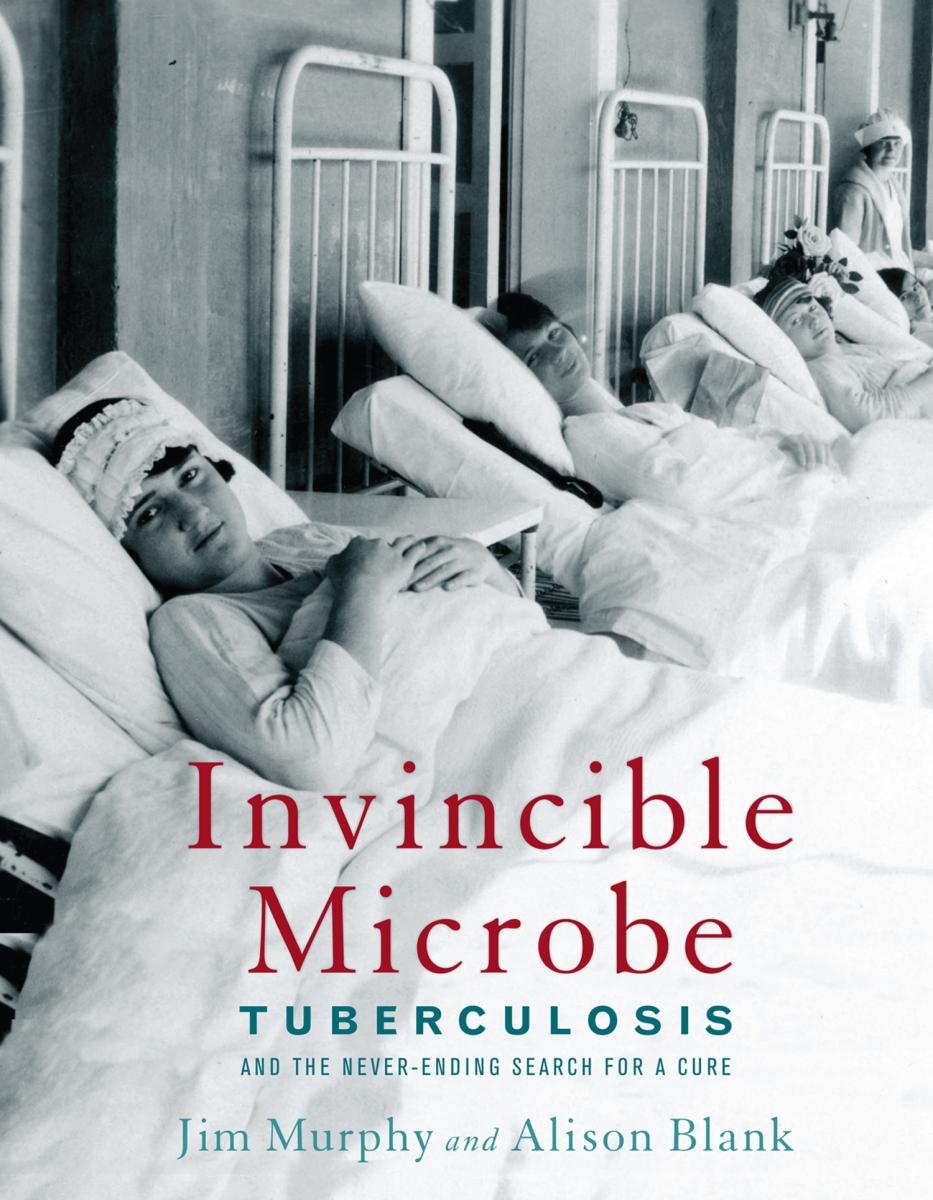
Invincible Microbe: Tuberculosis and the Never-Ending Search for a Cure
By Jim Murphy and Alison Blank
New York: Clarion Books, 2003, 160 pp. Ages 10–12.
The most effective serial killer in human history is not a man or a woman, but a tiny germ that has claimed over one trillion lives. Murphy and Blank spin their nonfiction tale as a “biography” of this serial killer, documenting the effect of tuberculosis across history, literature, and art. The text is spellbinding and will captivate its readers even as it appalls them. Murphy has never shied away from exploring racial and socioeconomic inequality in his historical accounts, and this work is no exception. For a slim volume, the backmatter is weighty: a hefty bibliography provides further reading suggestions for eager minds, and the source notes are well organized. While this title was designed for tween readers, adults may enjoy it as well.
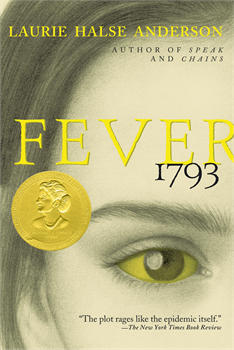
Fever 1793
By Laurie Halse Anderson
New York: Simon & Schuster Books for Young Readers, 2000, 2002 (paperback), 272 pp. Ages 10–14.
Laurie Halse Anderson provides readers with a powerful tale that is as gripping as it is thoroughly researched. The story follows Matilda (“Mattie”), a Philadelphia teenager, as she experiences a society gripped by yellow fever. As the title implies, the story takes place in the summer of 1793 in the then-capital of the United States, where rumors of a deadly disease are confirmed when the first victims begin to fall. The story twists and weaves as Mattie struggles to survive the illness and keep her family business alive after her mother’s disappearance. Anderson knows how to pull in readers, and her plotting is enthralling. Subplots touching on issues of social status, personality, and race add to the drama. A savvy choice for readers 10–15.
Christopher A. Brown is special collections curator of the Children’s Literature Research Collection at the Free Library of Philadelphia.

